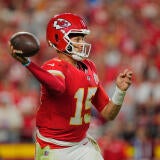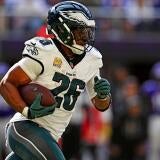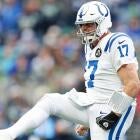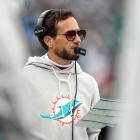NFL, NFLPA agree to revised CBA: Salary cap details, training camp timeline, roster size and more to know
Everything you need to know about the league's plan to kick off the 2020 season
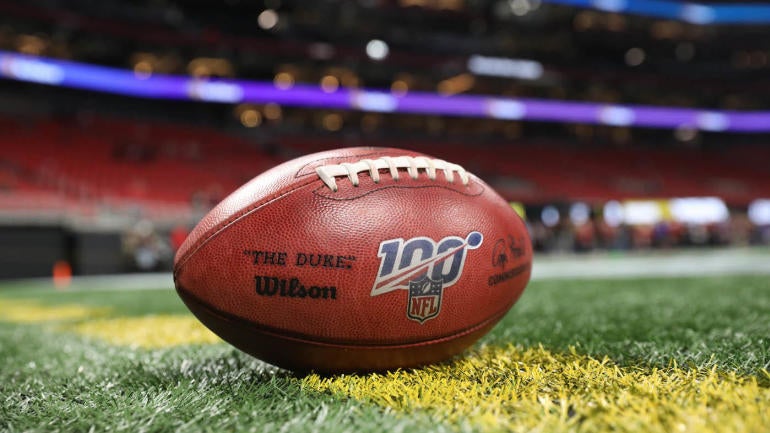
It took time, but the NFL and NFL Players Association have finally hammered out an agreement to return to work during the COVID-19 pandemic, with the NFLPA player representatives approving the deal on Friday afternoon by a 29-3 vote hours after the owners did the same. Just over four months after finalizing a new Collective Bargaining Agreement (CBA), the two sides have approved revisions to the CBA in order to dictate safety measures, training camp schedules and other issues pertaining to the 2020 season.
"We have worked collaboratively to develop a comprehensive set of protocols designed to minimize risk for fans, players and club and league personnel," commissioner Roger Goodell said in an NFL statement. "These plans have been guided by the medical directors of the NFL and the NFLPA and have been reviewed and endorsed by independent medical and public health experts, including the CDC, and many state and local public health officials. The season will undoubtedly present new and additional challenges, but we are committed to playing a safe and complete 2020 season, culminating with the Super Bowl."
Here's everything important you need to know about the approved changes. We'll be updating this space with more details of the agreement as they emerge.
Training camp timeline
This is the most immediate piece of the agreement, seeing that the Houston Texans and Kansas City Chiefs will officially begin camp on Saturday, with the other 30 NFL teams kicking off summer sessions on Tuesday. Put simply, the agreement clears the way for camp to proceed as planned and on time.
Per sources, camp timeline in the NFL's proposal ...
— Albert Breer (@AlbertBreer) July 24, 2020
Day 1: Testing/virtual meetings.
Days 2-3: Virtual meetings.
Day 4: Testing/virtual meetings.
Days 5-6: Physicals.
Days 7-15: Strength and conditioning (with a day off.)
Day 16: Practice starts.
Day 21: First padded practice.
A negotiations holdup this week reportedly saw the NFL threaten to send players home and run a virtual camp or even shut down camps altogether, but both sides have since approved plans for teams to begin meetings and initial COVID-19 testing -- starting July 28, for most teams -- before starting padded practices in mid-August.
As for the actual schedule at camp, players will have an "acclimation period" of 12 days before padded practices, which can begin on Aug. 17. Those 12 days include eight days of strictly strength and conditioning exercises and practice walkthroughs, as well as four days of strictly shells-and-helmets practices.
Preseason schedule
The approved camp schedule includes the elimination of the entire four-week preseason schedule, which had already been impacted by the league's cancellation of the Hall of Fame Game, originally set for Aug. 6. NFL owners had reportedly previously wanted to retain at least one or two games ahead of the regular-season schedule, but the NFLPA long advocated for complete cancellation given the risks of transmitting COVID-19 in the run-up to September's opener.
Roster size
In order to help curb the potential spread of COVID-19 in the lead-up to the season, the two sides have agreed to an Aug. 16 deadline for trimming offseason rosters from 90 to 80 players. (Typically, teams have been permitted to carry 90 players through the preseason and up until the 53-man roster cutdown ahead of Week 1.) Teams will, however, be allowed to retain 90 in the event they hold a split-squad setup during camp; some teams, per ESPN, already have plans to divide rosters and use both stadium and practice facilities for camp.
The agreement has also expanded each team's practice squad for the 2020 regular season to 16 players, four of which can be protected from other teams on a weekly basis. The NFL had already increased the scout team roster from 10 to 12 players as part of the initial new CBA, but adding an additional four per team is expected to give clubs added roster insurance in the event of active-roster members testing positive for COVID-19.
Practice squads increasing from 12 to 16 where teams can put 6 vets (no matter exp) on it for 2020. Will be interesting to see if teams can protect those players or if they're free to move like always
— Jonathan Jones (@jjones9) July 24, 2020
Salary cap impact
Reportedly one of the biggest final hurdles for the NFL and NFLPA in talks for a revised CBA, the economics of the 2020 season boil down to this: This year's cap ($198.2M for each team) will remain untouched, but in order to make up for the projected loss of revenue throughout the season, the NFL would spread the financial shortfall over four years beginning in 2021.
As part of the agreement, the 2021 salary cap floor will be set at a minimum of $175 million, up from the initial $165 million, marking a potentially stark drop from the projected 2021 cap of about $210 million. This means that while 2020 rosters figure to remain largely intact, teams could be forced to either cut or renegotiate with veterans carrying high cap numbers beginning in 2021.
One key point for 2020: if games are canceled, players won't get paid for those games, according to reports, but NFL Network's Ian Rapaport reports any unpaid 2020 base salary becomes guaranteed the following year. As long as players are on the roster on Week 1, 2020 will count as an accrued season on their contracts even if games are canceled down the road.
Players were told on NFLPA rep call that, as long as you're on the Week 1 roster and you play at least one game, your contract this year won't toll and you'll still get an accrued season and benefits.
— Dan Graziano (@DanGrazianoESPN) July 24, 2020
Opting out for 2020
All players will have the option to sit out the 2020 season because of concerns surrounding the pandemic. Those who are deemed high-risk for the virus will receive a $350,000 stipend for the season, while those who aren't deemed high-risk will receive a $150,000 stipend. (Qualifying as "high-risk" simply means meeting one of the criteria listed by the CDC for "increased risk" of severe COVID-19, including moderate-to-severe asthma, sickle cell disease and more, with the exception of high body mass index.)
Details on two types of opt-outs, which are irrevocable and due 7 days from NFL-NFLPA deal being finalized:
— Tom Pelissero (@TomPelissero) July 24, 2020
- High risk: $350,000 stipend with no offset, accrued/credited season
- Voluntary: $150,000 salary advance, no accrued/credited season
Either way, contract tolls.
While players will only have seven days from the date of the NFL-NFLPA agreement to opt out (and cannot revoke their decision), they will get the chance to opt out later in the season as well under special circumstances:
Players are being told on NFLPA rep call that they can still take a CoVID opt-out later in the season if someone in their family becomes sick, per source.
— IG: JosinaAnderson (@JosinaAnderson) July 24, 2020
Opting out would mean a player's contract tolls until 2021. High-risk opt-outs would still be credited with accrued season toward free agency, while voluntary opt-outs would not receive an accrued season credit.




